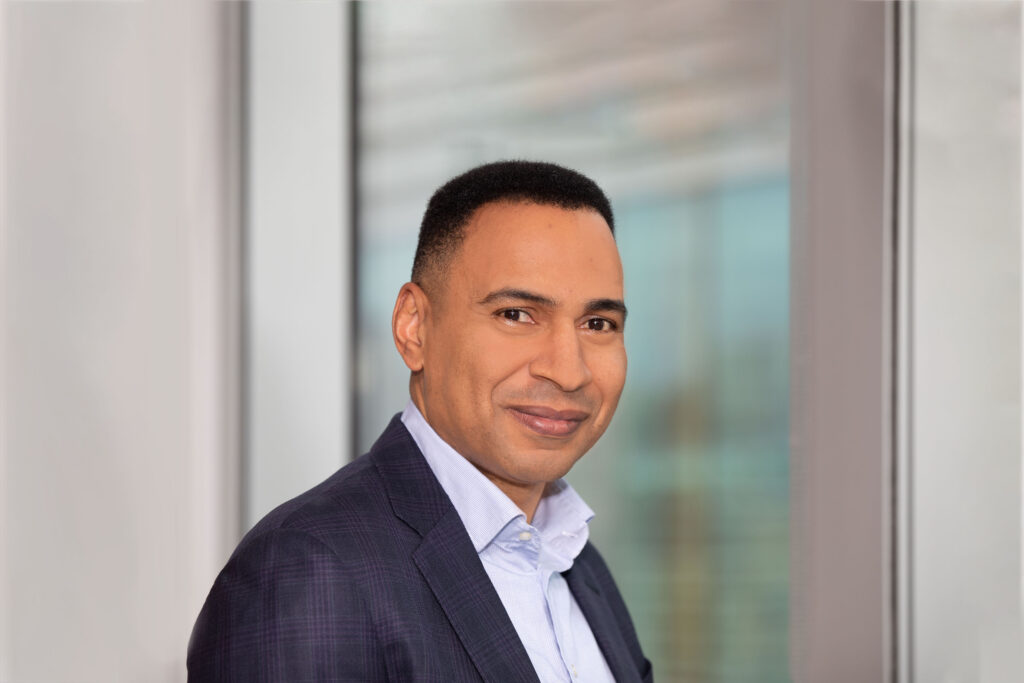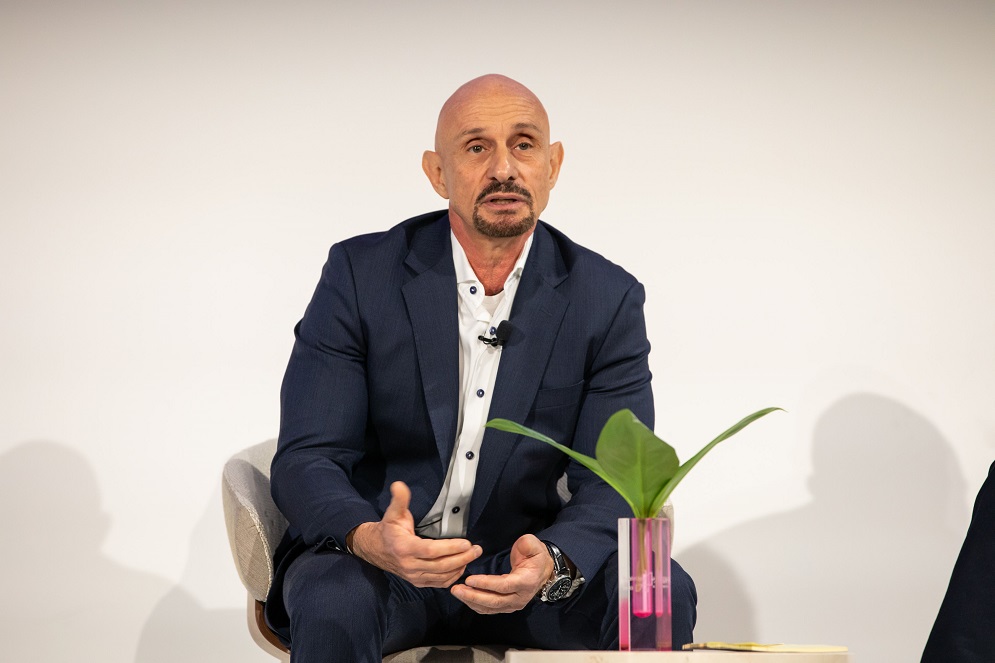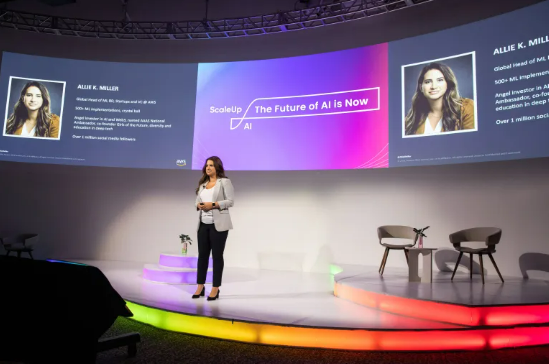EY’s consultancy business was set up to facilitate digital transformation of global enterprises. So what are the key technologies driving change in industry? James Pearce spoke with EY global VP Errol Gardner to find out
When a large enterprise is trying to get to grips with a major technological overhaul of their operations, where do they turn? For information, a CIO or CTO may try to discover the best solutions from the media (such as us here at TechInformed) or from conferences, but for implementation, consultancies and system integrators are often the go-to source.
Ernst and Young – or EY as it operates – is a UK-based is a multinational professional services network and one of the so-called “big four” accounting firms (along with Deloitte, KPMG and PricewaterhouseCoopers). It also offers tech consultancy business with revenues of close to $13 billion.

I meet Errol Gardner – the global vice chair of EY’s consulting business – at the company’s stand at Mobile World Congress in Barcelona. After almost three decades in consulting, including various roles with PwC and IBM, Errol Gardner joined EY in 2009, moving into his current role in 2020 – right in the middle of the pandemic.
“A lot of what we do is to bring new tech into the light,” he explains. “Around 40% of our professionals are tech professionals but maybe 60-70% of what the consultancy business does is tech-related.”
If it sounds odd that EY – a name perhaps more associated with the finance sector than tech – was at a telecoms conference, it shouldn’t.
As Gardner explains: “In terms of this sector, we are very focussed on the convergence of telecoms and technology. There are some huge opportunities for both of these industries to not just transform themselves but also to act as force multipliers of change across many sectors.”
The question is, how? How can a financial services company, or a manufacturing firm, or a logistics operation, benefit from the convergence of telecoms and tech? That’s something EY has been looking at very closely.
Horizons
“One of our focus areas, in part, is to discover what’s out there and what’s changing. We’ll do surveys periodically with our clients to understand what is our view and what we’re thinking about?”
One recent report from the company looked at the role of TMT (Technology, Media and Telecoms) companies play in a world where global trade is increasingly complex. This found that these firms “frequently lack a robust global trade and operating model strategy that simplifies complexity and drives profitable, sustainable growth” despite the expected rebound following the Covid-19 pandemic.
“Advances in technology are enabling a wider range of seamless forms of trade, which TMT companies should be perfectly placed to exploit,” the report says.
EY has also launched its Tech Horizon’s series of reports, which look into the role tech is playing in digital transformation, and the effects this is having on businesses worldwide. The global survey of 570 companies revealed six habits of transformation leaders: Customer focus; accelerating AI to drive growth; partnerships that drive innovation; nurturing talent with new strategies and incentives; activating governance for emerging tech; and powering innovation by leveraging data and being agile.
This is also having a financial impact on businesses, EY found. Leaders in digital transformation projects were “50% more likely than those not deemed leaders to annually see EBITDA increase by more than 15% on a five-year, CAGR basis.
They were also 45% more likely than those not deemed as leaders to unlock annual revenue growth of more than 10%, and 26% more likely than those not deemed as leaders to enjoy annual gross profit increase by more than 10%.
As Gardner explains, “We do surveys periodically with our clients to see if our views [on technology] resonate with them, and this has revealed some key focus areas, such as cloud and AI, and data and analytics more generally. Plus security, which are all critically important to them.
“We’ve got three waves at the moment. Firstly, you have companies that still haven’t figured out digital transformation, who are operating in a legacy – and arguably antiquated – technology sphere. They have to worry about where do we go next?”
Next, he identifies those who are in the process of moving towards digital. That means looking at “how you communicate with customers much more actively, how do you manage operations to deliver on the digital promise?”
Then there are those out front, who are adopting future solutions – cutting edge tech such as edge computing or private networks. Though solutions are “here today” in adoption terms, they are very much “tomorrow’s technology” in terms of wider adoption.
So how far along are most companies in this journey? Gardner says it is vertical specific, with “leaders and laggards” in every segment of enterprise.
“Clearly in in tech, you’ve got more leaders than lockouts. But then the adoption of technology has accelerated substantially in the last five years,” he adds. The Covid-19 pandemic has accelerated this even further, with businesses left with little choice but to transform their operations due to global lockdowns.
Beyond telecoms and technology, he points to finance and banking as quick adopters of new technology.
“If you look at that market, they face complexity in what they have, but they are putting significant investment into technology and the solutions that wrap around that. But there are still a lot of banks that are very much focussed on the traditional, local branch network, ways of working.”
Beyond finance, he points to industries such as automotive as leaders in overhauling their approach to manufacturing, with car manufacturers such as Fisker even making an appearance at Mobile World Congress.
“This highlights that car manufacturers are now becoming technology companies, with less of a focus on driving cars. Look at the likes of Tesla, too,” Gardner adds. “People are now seeing that cars are about technology but also about data. As we move to more autonomous vehicles it will become much more about the experience than about driving from A to B.”
Green machine learning
I am curious as to whether Gardner or his team have spotted any technology- adoption or business transformation patterns that span several enterprise sectors.
“If you talk to different C-Suite and clients – as we spend a lot of our time doing – you find that most recognise the imperative to transform. They recognise that technology is the means to achieve this.”
There is also huge interest in how to transform in a sustainable way. “There’s a lot of talk about sustainability – for a lot of organisations, the question is how to we leverage our considerable investment into digital transformation to also take a step to become greener.”
This, he adds, might mean looking at supply chains, or even taking in social issues such as diversity. “Really, it is just a question of how and where businesses are on that journey.”
Much of this social drive is coming from a consumer demand which dictates that the companies they buy from are as sustainable as possible, but there is also pressure within organisations from employees.
“If you are an organisation saying we cannot ignore those things that reduce costs, improve sustainability outcomes, and also help us to become a digital organisation, the question becomes “how do we do all three?” instead of just hitting one or two of them,” he elaborates.
“The aim is to do this through the lens of cost reduction to make sure the business is lean and efficient going forward.
“But executives also have to be clear on what metrics they are targeting, from a sustainability perspective, and what is important to stakeholders. It isn’t easy, or straightforward, but that is the conversation C-Suite are realising they need to have because funding is restrained.”
AI leading the way
So, as a man who oversees the transformation of other businesses, what technologies excite Errol Gardner?
He smiles: “I don’t mean to sound blasé but all technology excites me. I’m excited by helping organisations move to the new world we’re all in. Even if that is just a simple move to the cloud, it can be a big change. But right down to companies in retail who are looking at how they can leverage the metaverse to demonstrate what they are doing.”
But surely there must be a current trend that stands out? Some kind of technology that EY’s huge client base is showing interest in more than any other.
“In very simplistic terms, it is automation,” says Gardner. “What I mean by that is it is simplifying business processes through automation. It is the most basic function of AI allowing a reduction in the use of manual labour. Then, rather than just repeating processes over and over, you can use machine learning to train models to be more efficient and more sophisticated.”
The use cases then become more sophisticated but so do the technological solutions. This, he adds, allows for benefits such as cost reduction.
“But perhaps more importantly, it improves the customer experience – it allows for a quicker turnaround to lure customers, by offering real-time analysis and data.
“As a consequence, I think that’s the area that’s probably got the most near term applicability. And again, if you look at this world, in telcos and tech in particular, it’s in the IoT space.”
This, he concludes, will have a real-term impact for both workers on the ground, but also for executives looking to transform their operations.
“Yes, this allows for benefits such as cost reduction,” Gardner explains, “but there is a wider business angle, such as maintenance and how you are tracking it. This could be done internally or it may be through a third party.
“Then there is the plethora of data. AI allows you to use models to organise this, to run through it, and to determine when you have issues that need intervention. Then you can either tell a human worker there is a problem you need to fix, or there is an action that the system needs to take to fix itself.
“These are the big areas we’re seeing a lot of interest in, and it spans across verticals.”
Written by James Pearce and republished with permission from TechInformed.



